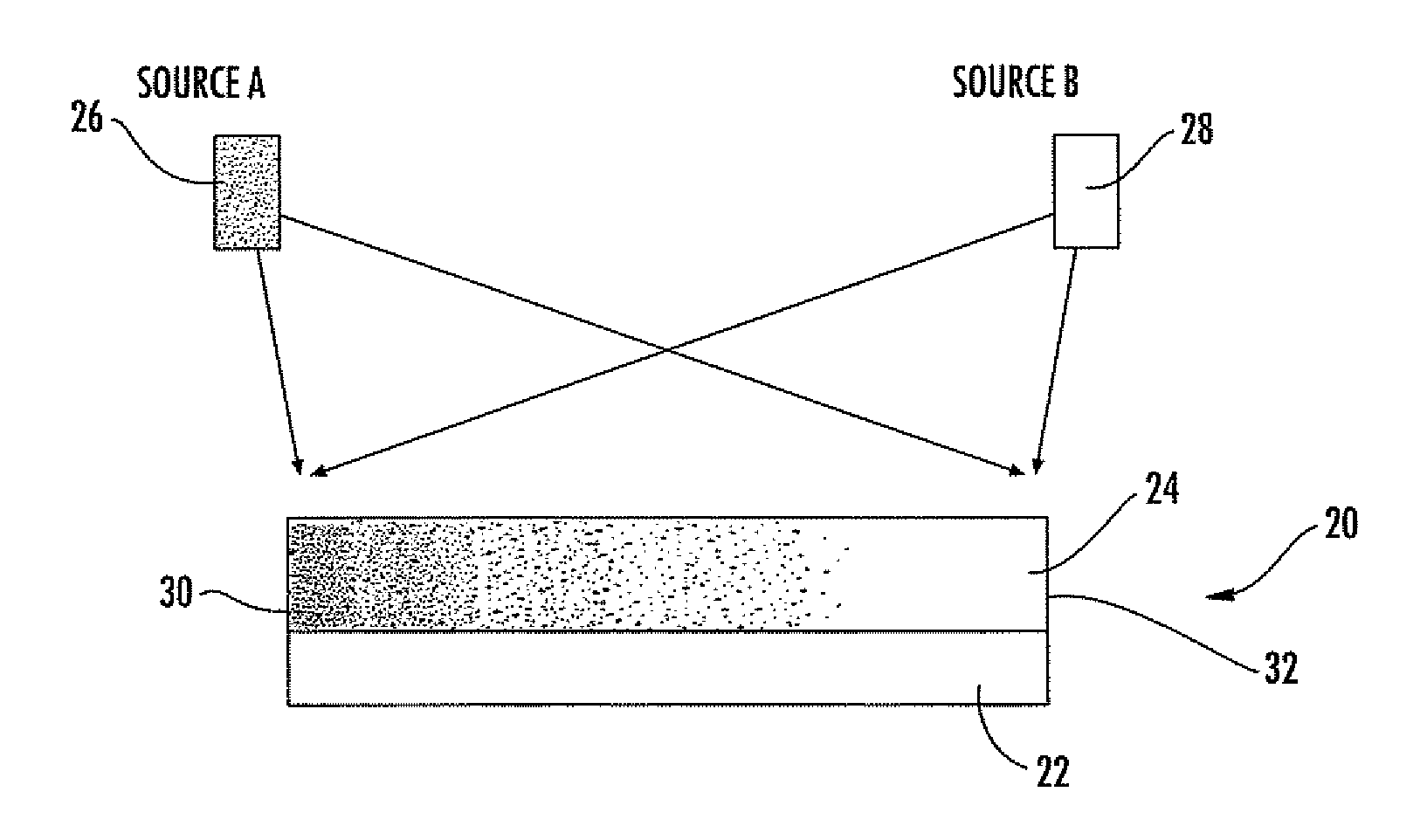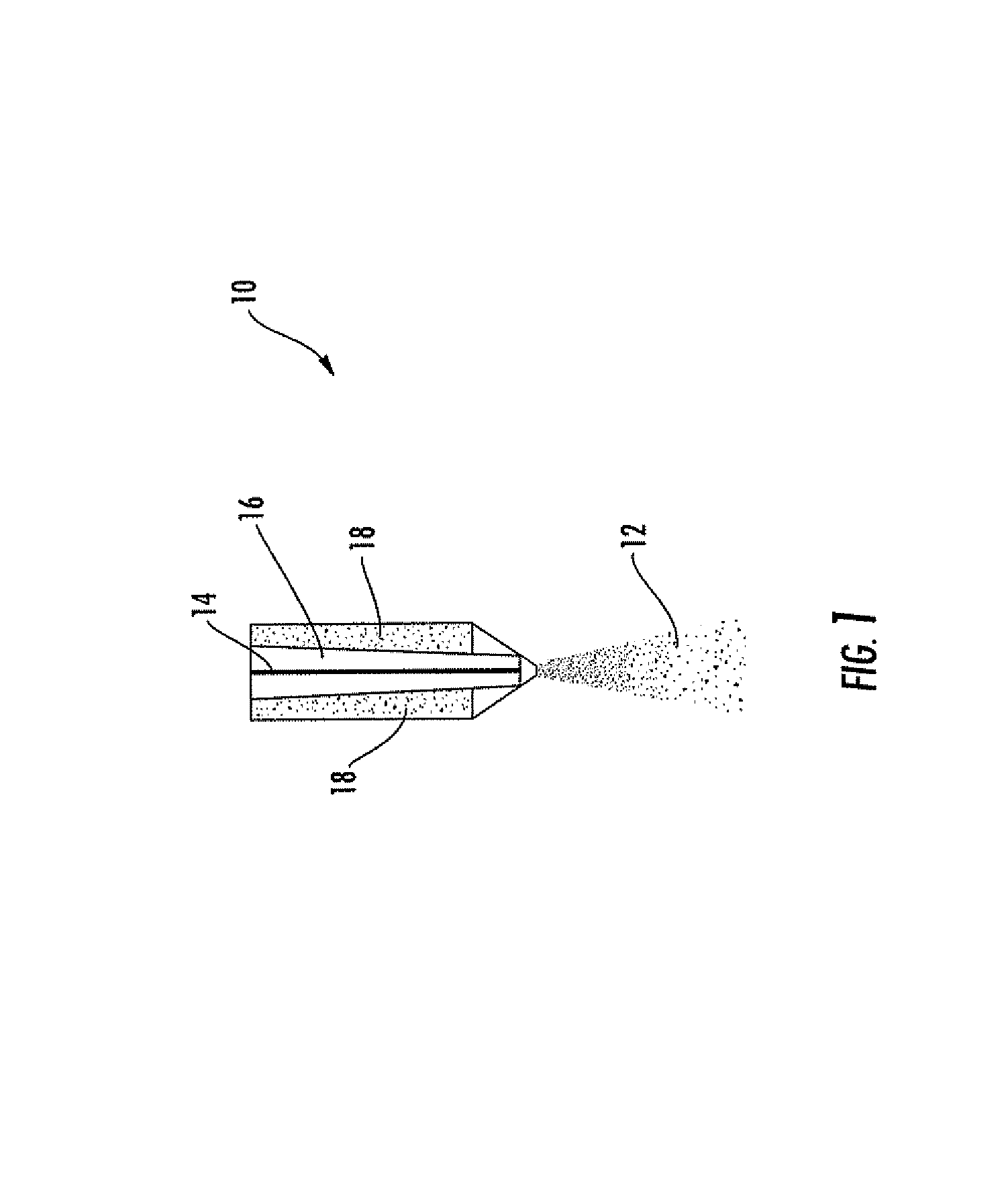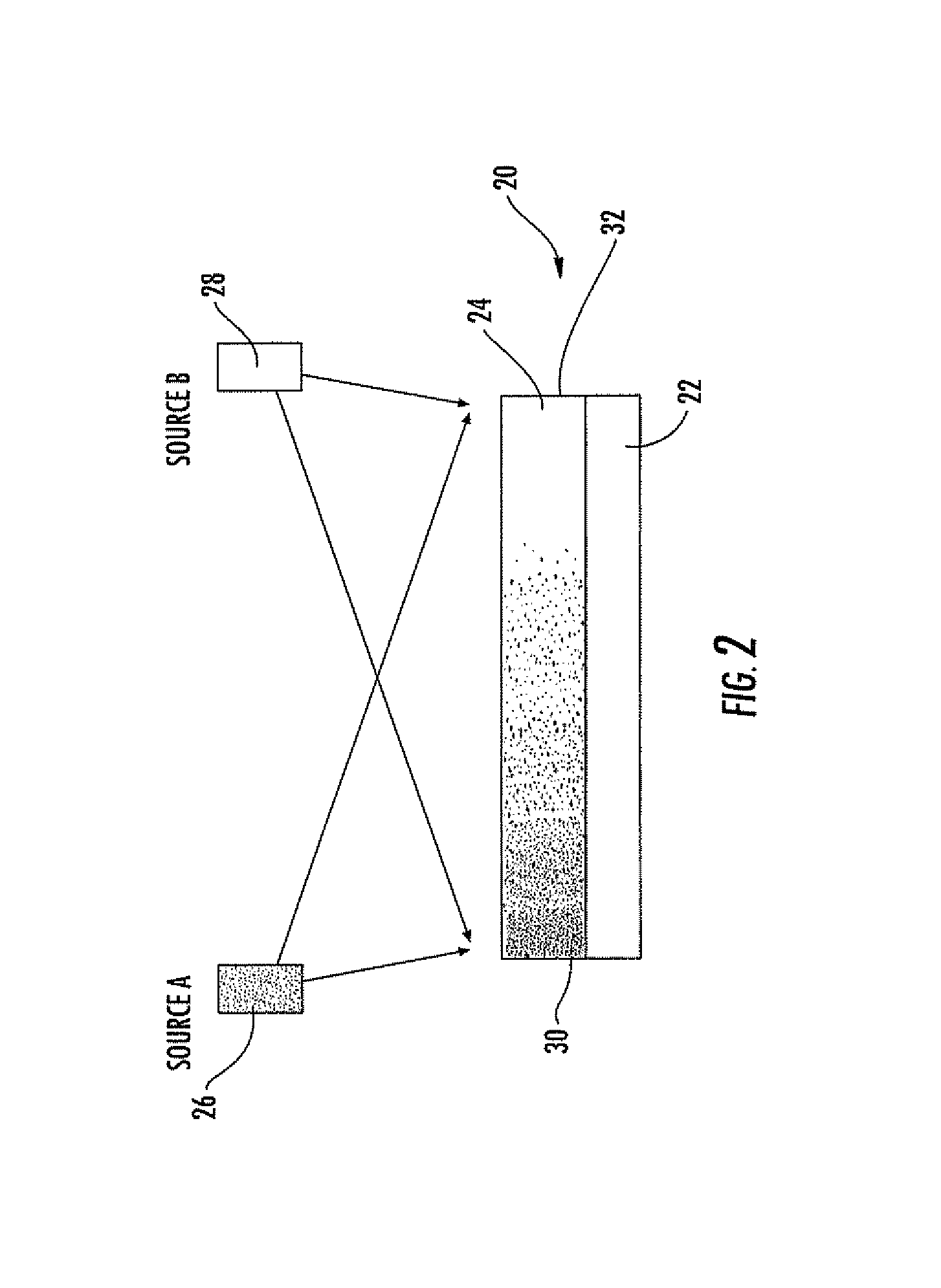Methods and devices for high throughput crystallization
- Summary
- Abstract
- Description
- Claims
- Application Information
AI Technical Summary
Benefits of technology
Problems solved by technology
Method used
Image
Examples
example 1
Batch Crystallization
[0159]Protein aqueous solution (with pH buffer) and a aqueous salt solution (typically in the same pH buffer) are first filtered through 0.2 μm syringe filter, then mixed in a selected volume ratio (the concentrations of solutions are typically made so that equal volume of solutions are mixed). The solution thus prepared was applied to chip surfaces in either one of the two ways:
[0160]1) A common layer of solution was applied over entire chip surface area, by compressing and sandwiching a sufficient volume of solution on the surface with a siliconized glass slide; the sandwich was sealed by peripheral vacuum grease. In this case, all different hetero-surfaces on the chip are subjected to an identical layer of protein-salt solution, and the wells on the surface compete for the “fittest” in forming protein crystals.
[0161]2) A pipette or automated liquid dispenser was used to distribute an array of protein-salt mixture dots in registry to the array of different het...
example 2
Vapor Diffusion Crystallization
[0162]An artificial hetero-surfaces library was made, according to the methods described above, on a chip (typically 1×1 cm), pieces of which can fit into the cell of a 24-wells Q-plate (e.g. the “Q-plate” from Hampton Research). The chip was mounted on the post of a Q-plate cell with vacuum grease. Aqueous protein solution (with pH buffer) and a aqueous salt solution (typically in the same pH buffer) were first filtered through 0.2 μm syringe filter, then mixed in a selected volume ratio (the concentrations of solutions are typically made so typically equal volume of solutions are mixed). The solution was applied to the hetero-surface or combinatorial hetero-surface of a crystallization chip with many different surface compositions or thickness profiles, either in a single liquid layer or in an array of liquid dots, as described in the batch crystallization method above. The salt solution, against which the protein solution to crystallized, is placed ...
example 3
Protein Solutions and Crystallization Result Summary
[0163]Six different proteins were examined for crystal formation using the crystallization apparatus and methods of the invention. TABLE 3 provides a detailed list of each protein analyzed and its corresponding salt solution compositions.
[0164]
TABLE 3Lysozyme:A: 2.5% (w / v) chicken egg Lysozyme (30 mg / ml) in 0.05 Msodium acetate and 0.01% NaN3 adjusted with HCl to pH 4.8B: 6.5% (w / v) solution of NaCl in 0.1 M sodium acetate and 0.02%NaN3 adjusted with HCl to pH 4.8Thaumatin:A: 8 mg / ml aqueous solution with pH = 7.3B: 2 Molar of Na / K tartrate solution (pH = 7.3)Trypsin:A: 60 mg / ml trypsin in 10 mg / ml benzamidine, 3 mM CaCl2 and 0.02%NaN3B: 18% (w / v) PEG 4000 aqueous solutionRibonucleaseA: 20 mg / ml aqueous Ribonuclease solutionB: 18% (w / v) PEG 4000 aqueous solutionMyoglobin:A: 20 mg / ml aqueous solutionB: 18% (w / v) PEG 4000 aqueous solutionBeef CatalaseA: 50 mg / ml beef catalase in 0.02% NaN3B: NH4OH water
[0165]In Table 4 a summary of s...
PUM
| Property | Measurement | Unit |
|---|---|---|
| Nanoscale particle size | aaaaa | aaaaa |
| Nanoscale particle size | aaaaa | aaaaa |
| Temperature | aaaaa | aaaaa |
Abstract
Description
Claims
Application Information
 Login to View More
Login to View More - R&D
- Intellectual Property
- Life Sciences
- Materials
- Tech Scout
- Unparalleled Data Quality
- Higher Quality Content
- 60% Fewer Hallucinations
Browse by: Latest US Patents, China's latest patents, Technical Efficacy Thesaurus, Application Domain, Technology Topic, Popular Technical Reports.
© 2025 PatSnap. All rights reserved.Legal|Privacy policy|Modern Slavery Act Transparency Statement|Sitemap|About US| Contact US: help@patsnap.com



